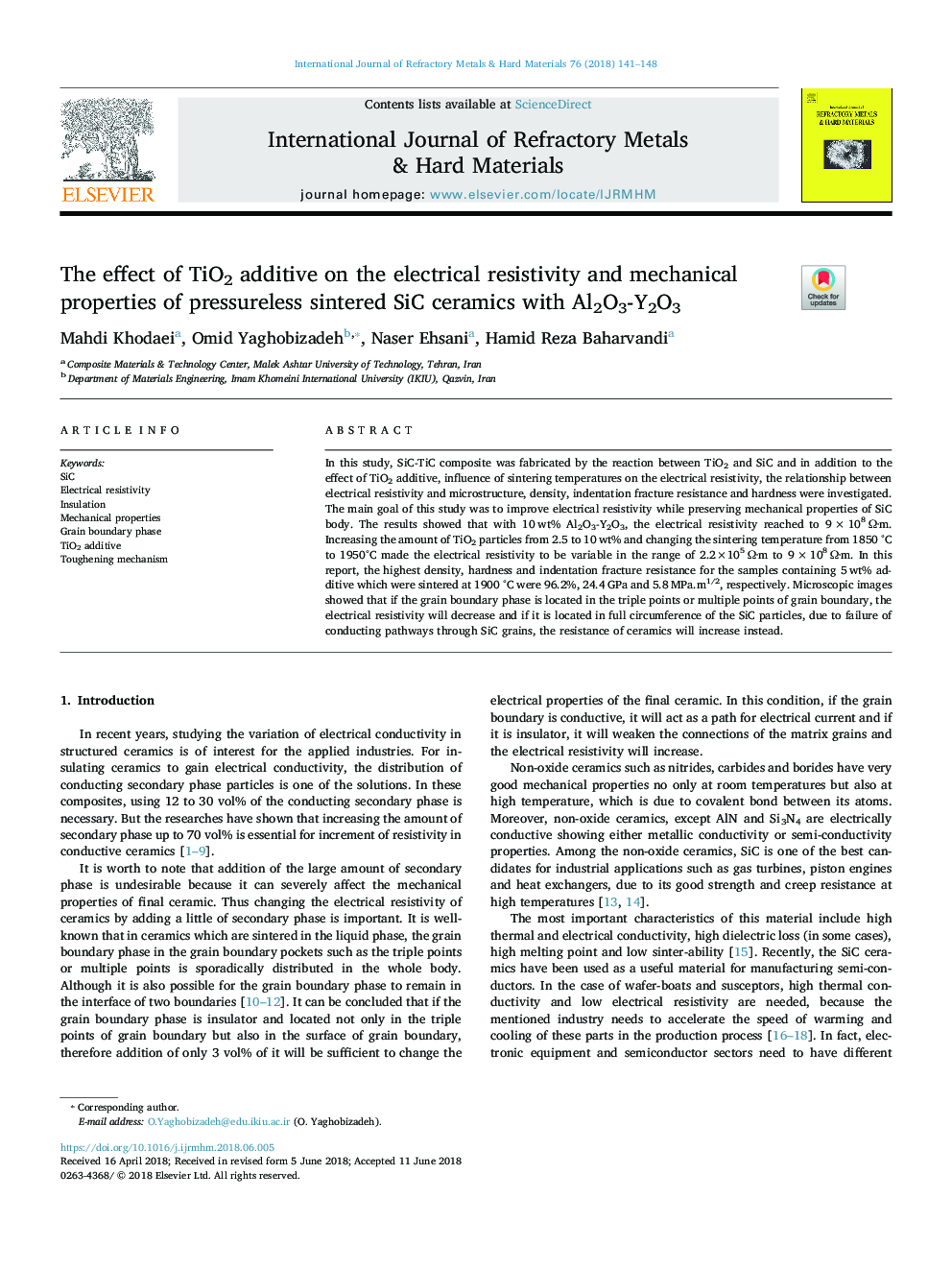| Article ID | Journal | Published Year | Pages | File Type |
|---|---|---|---|---|
| 7989500 | International Journal of Refractory Metals and Hard Materials | 2018 | 8 Pages |
Abstract
In this study, SiC-TiC composite was fabricated by the reaction between TiO2 and SiC and in addition to the effect of TiO2 additive, influence of sintering temperatures on the electrical resistivity, the relationship between electrical resistivity and microstructure, density, indentation fracture resistance and hardness were investigated. The main goal of this study was to improve electrical resistivity while preserving mechanical properties of SiC body. The results showed that with 10â¯wt% Al2O3-Y2O3, the electrical resistivity reached to 9â¯Ãâ¯108â¯Î©Â·m. Increasing the amount of TiO2 particles from 2.5 to 10â¯wt% and changing the sintering temperature from 1850 °C to 1950°C made the electrical resistivity to be variable in the range of 2.2Ã105â¯Î©Â·m to 9â¯Ãâ¯108â¯Î©Â·m. In this report, the highest density, hardness and indentation fracture resistance for the samples containing 5â¯wt% additive which were sintered at 1900 °C were 96.2%, 24.4â¯GPa and 5.8â¯MPa.m1/2, respectively. Microscopic images showed that if the grain boundary phase is located in the triple points or multiple points of grain boundary, the electrical resistivity will decrease and if it is located in full circumference of the SiC particles, due to failure of conducting pathways through SiC grains, the resistance of ceramics will increase instead.
Keywords
Related Topics
Physical Sciences and Engineering
Materials Science
Metals and Alloys
Authors
Mahdi Khodaei, Omid Yaghobizadeh, Naser Ehsani, Hamid Reza Baharvandi,
